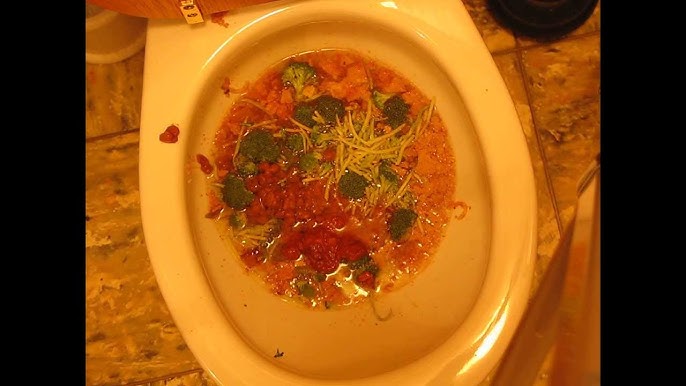Is it Safe to Dispose of Food in the Toilet?
Is it Safe to Dispose of Food in the Toilet?
Blog Article
Every person has got his or her own thoughts with regards to Is it safe to flush food (especially rice) down the toilet?.

Introduction
Many people are commonly confronted with the predicament of what to do with food waste, especially when it comes to leftovers or scraps. One common concern that develops is whether it's okay to flush food down the commode. In this short article, we'll explore the reasons why people could consider flushing food, the effects of doing so, and alternative approaches for appropriate disposal.
Reasons people might consider flushing food
Absence of understanding
Some people may not be aware of the possible harm triggered by purging food down the bathroom. They might erroneously think that it's a harmless technique.
Benefit
Flushing food down the bathroom may feel like a quick and very easy service to taking care of unwanted scraps, particularly when there's no neighboring trash bin available.
Laziness
Sometimes, individuals might just pick to flush food out of sheer negligence, without taking into consideration the effects of their activities.
Effects of flushing food down the toilet
Ecological impact
Food waste that ends up in waterways can add to air pollution and harm water ecological communities. In addition, the water utilized to flush food can stress water resources.
Pipes problems
Purging food can bring about blocked pipes and drains, triggering expensive pipes fixings and troubles.
Sorts of food that need to not be flushed
Fibrous foods
Foods with fibrous appearances such as celery or corn husks can get tangled in pipelines and trigger obstructions.
Starchy foods
Starchy foods like pasta and rice can soak up water and swell, resulting in clogs in pipes.
Oils and fats
Greasy foods like bacon or cooking oils need to never ever be flushed down the toilet as they can strengthen and trigger clogs.
Proper disposal methods for food waste
Making use of a waste disposal unit
For homes outfitted with waste disposal unit, food scraps can be ground up and purged with the pipes system. However, not all foods appropriate for disposal in this manner.
Recycling
Particular food packaging materials can be reused, decreasing waste and decreasing environmental effect.
Composting
Composting is an eco-friendly way to take care of food waste. Organic products can be composted and utilized to enrich dirt for gardening.
The value of proper waste monitoring
Minimizing environmental injury
Proper waste management practices, such as composting and recycling, assistance decrease contamination and protect natural resources for future generations.
Securing pipes systems
By preventing the technique of flushing food down the commode, homeowners can prevent costly pipes repairs and maintain the stability of their plumbing systems.
Verdict
To conclude, while it might be tempting to flush food down the commode for comfort, it is necessary to comprehend the potential effects of this action. By adopting correct waste administration practices and getting rid of food waste responsibly, individuals can add to healthier pipes systems and a cleaner atmosphere for all.
FLUSH FOOD DOWN THE TOILET?
FLUSHING FOOD CAN CAUSE BLOCKED DRAINS IN YOUR HOME
All of the plumbing fixtures in your home are connected to the same sewer pipe outside of your home. This outdoor sewer pipe is responsible for transporting all the wastewater from your home to the Council sewer mains. Even small pieces of food that go down the kitchen sink can cause problems for your sewer. It should therefore be obvious that flushing larger bits of food, such as meat, risks a clog in either the toilet itself or the sewer pipes. Flushing greasy food is even more problematic because oil coagulates when it cools, coating the interior lining of your pipes.
THE TOILET IS NOT A BIN
Food isn’t the only thing that people shouldn’t be flushing down the toilet. People use the toilet to dispose of all kinds of things such as tampons, makeup wipes, dental floss, kitty litter and even underwear. Water goes to great lengths to educate residents about the high costs and stress placed on wastewater treatment systems simply from people flushing the wrong stuff down the toilet. It costs taxpayers millions of dollars each year, and homeowners thousands in blocked drain repairs.
FLUSHING FOOD IS A WASTE OF WATER
Flushing food is a waste of our most precious resource - water. In June this year Level 1 water restrictions were introduced to protect water supply from drought conditions. Much of New South Wales continues to be affected by prolonged drought with recent figures revealing up to 97 per cent of the state remains in drought. Depending on whether you have a single or dual flush toilet, every single flush uses between five and 11 litres of water. In the current climate this is a huge amount of water to be wasting on flushing food that should be placed in the bin (or better yet, the compost).
https://www.jabplumbingsolutions.com.au/blog/can-you-flush-food-down-the-toilet

I'm just very curious about Think Twice Before Flushing Food Down Your Toilet and I'm hoping you enjoyed reading the new blog posting. If you enjoyed reading our post please remember to share it. We enjoy reading our article about What Can Happen If You Flush Food Down the Toilet?.
Book Instantly Report this page